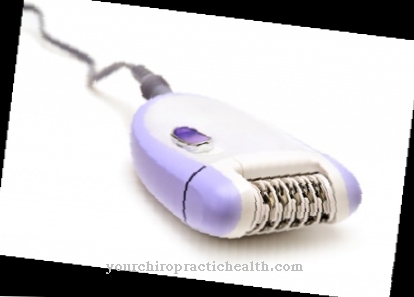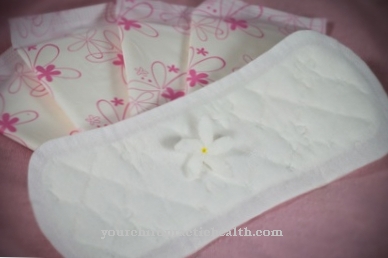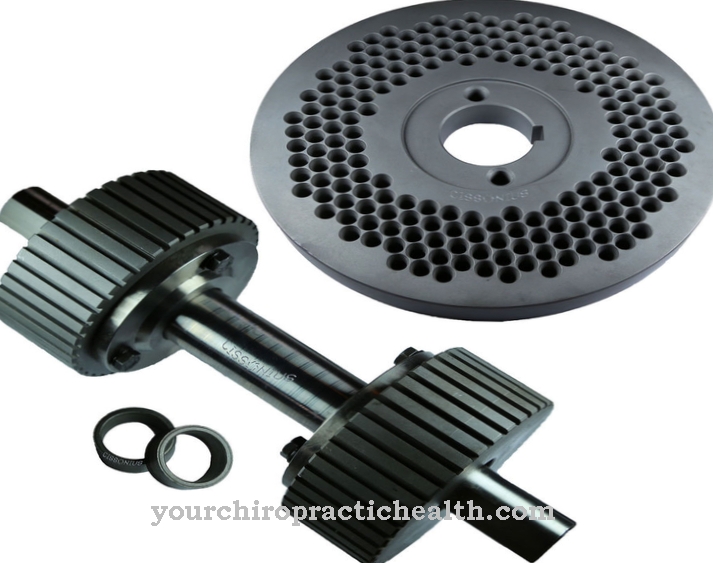As Interdental brush a special instrument for dental hygiene is called. It is used to clean the spaces between the teeth.
What is an interdental brush?

An interdental brush is a small brush for cleaning teeth. It is considered a valuable tool for eliminating bacteria and food residues.
As food residues get stuck in the spaces between the teeth, cleaning this region is considered important. However, conventional toothbrushes are not well suited for this because they cannot reach the sensitive areas. This applies primarily to the area of the back molars.
Electric toothbrushes also have a hard time reaching the spaces between the teeth. For this reason, numerous dentists recommend the additional use of special interdental toothbrushes.
Shapes, types & types
Interdental brushes are significantly smaller than ordinary toothbrushes. They are offered in different versions and have different handles. The so-called fir tree shape is most often used. It is called the Christmas tree because of its shape. While the back assumes wider dimensions, the front is narrowed to a point.
Other brush shapes are the bottle shape and the brush shape. In addition, it is important to distinguish between interdental brushes that already have a handle and those on which the handle can be attached.
The specimens that already have a handle are only used once and are then disposed of. In principle, an interdental brush should not be used for longer than six weeks.
The size and nature of the bristles can also differ. Furthermore, manufacturers are increasingly trying to take into account the individual needs of customers.
Which type of interdental brush is ultimately best suited for the individual depends on the width of the interdental spaces. This means that considerable deviations are possible for every person. The spaces between the teeth are usually very narrow. Therefore, interdental brushes that are bottle-shaped are considered best for use.
Structure & functionality
An interdental toothbrush is composed of a cylindrical brush head. This is quite short and is similar to a small bottle cleaner. The brush head is in a plastic holder. This holder is inserted into a handpiece. Alternatively, it can also be guided directly with the fingers.
An interdental brush is also used after normal teeth brushing. Every single interdental space is cleaned during the application. The interdental brushes are also suitable for cleaning the posterior region due to their ergonomic shape and their bent head. However, dentists recommend inserting the special brush very carefully into the gaps, as otherwise there is a risk of the brush kinking. It can also injure the gums. It is best to gently wiggle the small brush back and forth once or twice.
In the early stages, users often suffer from bleeding gums. The bacteria in the mouth can still cause inflammation. However, if the interdental brush is used regularly, this problem is significantly reduced. After using it, it is important to clean the interdental brush with water to remove the germs.
The interdental spaces of the user must be wide enough to be effective. However, if the teeth are very close together or if they are nested, the painless use of an interdental brush is extremely difficult. In the event of repeated pain, it is not recommended to use the instrument and only floss is recommended.
Dentists recommend that you clean the interdental spaces at least once a day. Several cleanings per day, on the other hand, are counterproductive because the dental papilla can be affected.
To counteract bleeding, it makes sense to avoid too aggressive brushing and only carefully brush the corners of the teeth. The best time to use the interdental brush is the evening before going to bed.
Medical & health benefits
Many dentists see the use of interdental brushes as very beneficial for dental health. In this way, plaque and stuck food residues can be removed more effectively. In addition, the interdental toothbrush is seen as an important preventive measure against approximal caries (interdental caries). Gaps between teeth, exposed interdental spaces that are not covered by the gums, and the restoration of brackets and bridges can also be considered as areas of application.
Compared to flossing, using an interdental brush is easier. The small brushes are equipped with a handle, which makes them much easier to use. An interdental brush is especially beneficial for people who have problems using dental floss.
However, there are also disadvantages. This means that the brushes cannot get under the gums because the width between the gum and the tooth is only one millimeter. If the user nevertheless tries to penetrate the furrow with the head of the brush, this can lead to inflammation of the gums or their regression. Exposing the neck of the tooth, which causes pain, is also possible. There is also the risk of abrasion of the hard substance of the teeth due to incorrect use of the brush. As a result, the opposite effect occurs and further areas are formed which lead to approximal caries.
Before using an interdental brush, the user should have a dentist explain how to use it. In this way, the experienced dentist can identify which size is the right one for the application, which in turn prevents undesirable side effects.



























